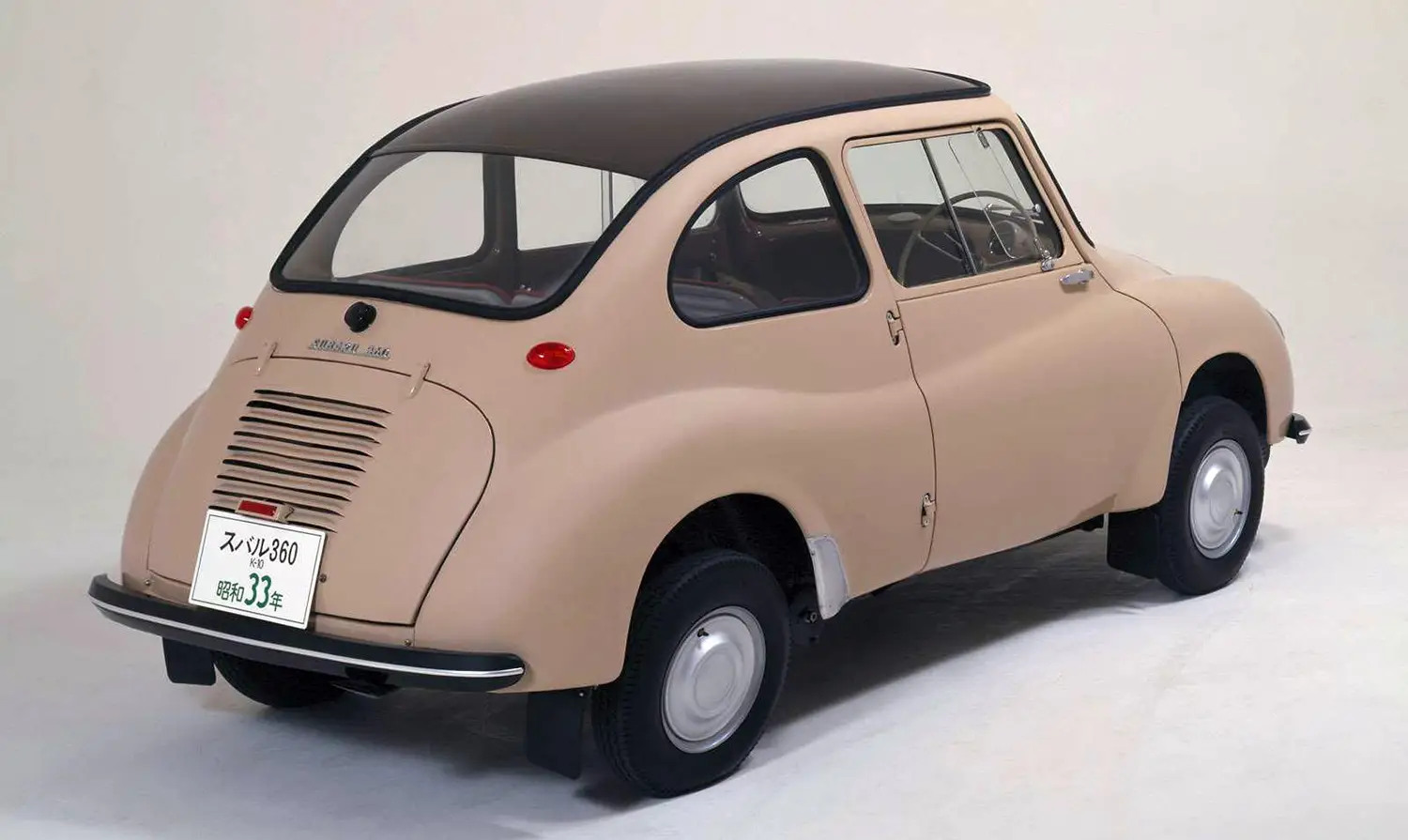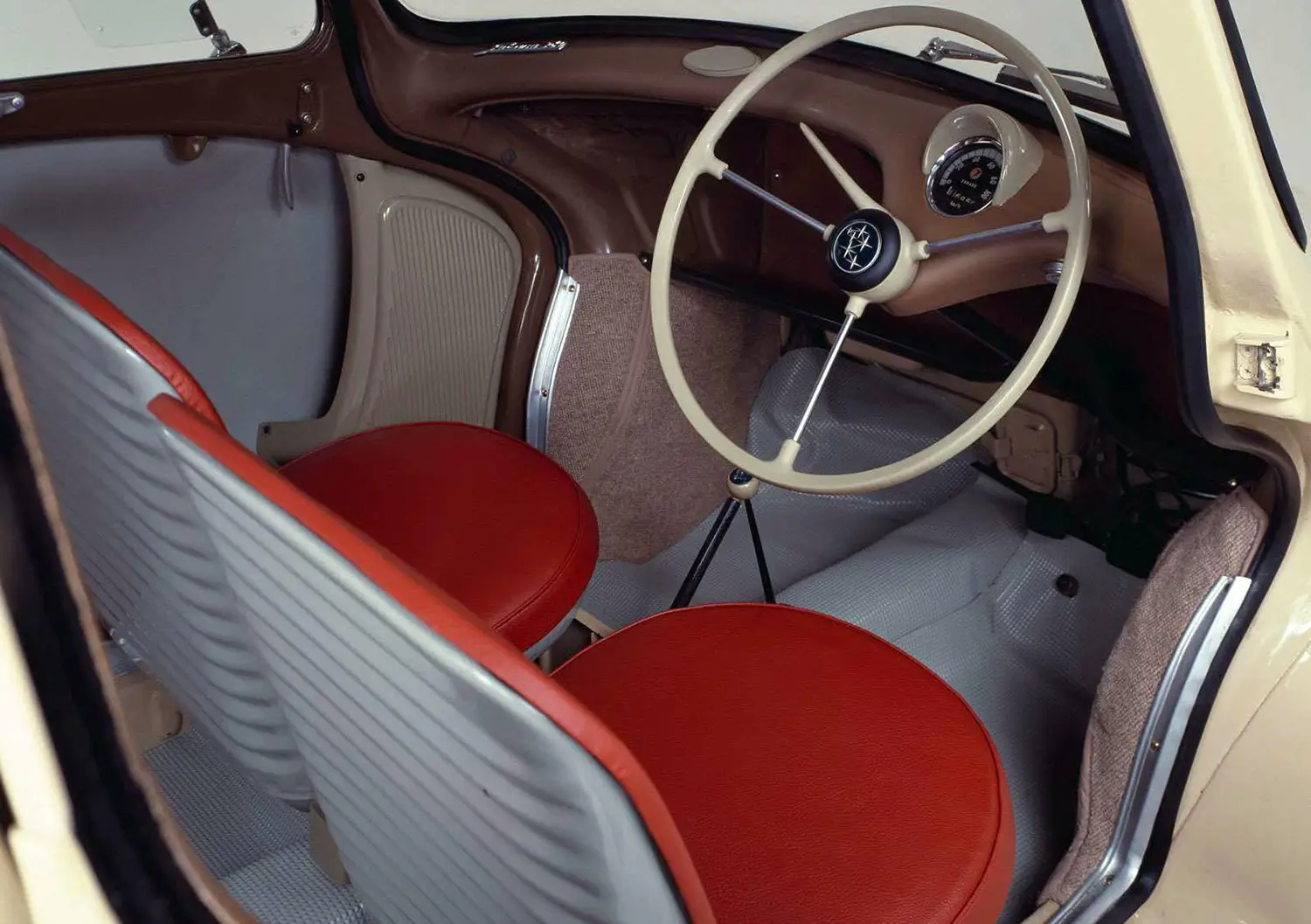
The 1958 Subaru 360 was more than just Subaru’s first production car, it was the beginning of Japan’s kei car revolution. Compact, efficient, and charmingly simple, the 360 became a symbol of post-war Japanese mobility and ingenuity. Its air-cooled engine, lightweight body, and clever design reflected a nation rebuilding its identity through accessible technology.
Japan’s First Kei Car
When Fuji Heavy Industries launched the Subaru 360, the company aimed to create an affordable vehicle for the average Japanese family. Built under Japan’s kei car regulations, the 360 featured a 356 cc two-stroke engine mounted at the rear. This configuration allowed it to qualify for the smallest tax and insurance brackets, making it a true people’s car.

The “360” in its name represented its engine displacement, while its compact proportions made it ideal for Japan’s narrow city streets. The car’s lightweight monocoque chassis and fiberglass roof panel were engineering feats in 1958, showcasing Subaru’s innovative spirit from the start.
Engineering Simplicity and Innovation
At its debut, the Subaru 360 produced just 16 horsepower and promised fuel efficiency of around 66 miles per gallon. Despite modest figures, its 385 kg curb weight meant it was lively and surprisingly capable in urban settings. As development continued, output rose to 25 hp, and the sportier Young SS variant reached 36 hp with twin carburetors.
The air-cooled engine’s simplicity made it reliable and easy to service, key traits for post-war consumers. The rear-engine layout also provided stability and traction, giving the 360 a nimble, confident feel at low speeds. For many Japanese families, it represented freedom and progress on four tiny wheels.

Variants and Evolution
Subaru expanded the 360 lineup to suit diverse needs. The “Custom” station wagon added practicality, while the convertible brought open-air enjoyment. Sport models like the Young S and Young SS added flair, with features such as bucket seats, tachometers, and distinctive roof stripes. Each version captured a different side of Japan’s growing car culture.
Beyond passenger models, Subaru also developed commercial variants. The Sambar truck and van used the same 360 platform and engine, offering agility and excellent fuel economy for small businesses. Their success helped Subaru strengthen its presence in both private and commercial markets.

Performance and Technical Highlights
The 1958 Subaru 360 featured a 356 cc two-cylinder, two-stroke engine producing 16–36 hp depending on the version. Power was delivered to the rear wheels through a simple 3-speed or 4-speed manual transmission. Despite its size, the car could reach speeds up to 100 km/h. With its light frame and efficient powertrain, the 360 embodied minimalism and clever engineering, qualities that would define Subaru’s DNA for decades.
Global Reach and Controversy
In the late 1960s, entrepreneur Malcolm Bricklin imported the Subaru 360 to the United States, marketing it as an affordable microcar. However, American reception was harsh. Consumer Reports labeled it “Not Acceptable” due to poor crash performance and limited power, effectively ending its U.S. presence. Still, in its homeland, the 360 remained beloved for its practicality and affordability.

Legacy and Heritage
Production of the Subaru 360 continued until 1971, with over 390,000 units built. It paved the way for the Subaru R-2 and later the long-lived Rex. More importantly, it laid the foundation for Subaru’s focus on durable engineering and user-oriented design. Today, surviving examples are treasured as cultural artifacts, reminders of how small cars shaped big dreams.

Summary
The 1958 Subaru 360 stands as a symbol of innovation, resilience, and accessibility. It turned mobility into a national possibility and established Subaru as an automaker that balanced practicality with progress. Though small in stature, the 360’s legacy looms large as Japan’s first true kei car and the humble origin of a global brand.
Disclaimer: Content on this site is for informational purposes only. Vehicle specs, pricing, and availability may change. Always verify details with official sources before making decisions. Opinions are those of the authors.
Source: Subaru

